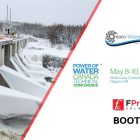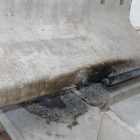Introduction
Forensic investigation of reinforced concrete structures is crucial for determining the causes of structural failures and assessing damage, especially in scenarios involving exposure to extreme heat, fire, and corrosion. Nondestructive testing (NDT) methods play a vital role in this process by providing valuable insights into the condition of concrete and reinforcement. In this article, we will explore the applications of NDT methods, with a focus on Ultrasonic Pulse Velocity (UPV), Ultrasonic Pulse Echo (UPE), and Corrosion Inspection, in forensic investigations of reinforced concrete structures.
Nondestructive Testing for Forensic Investigation
NDT techniques allow engineers and forensic experts to evaluate the integrity of concrete structures. These methods utilize various physical principles to assess properties such as:
- concrete strength,
- presence of defects (cracks, cavities),
- alterations to concrete composition (uniformity and integrity)
- presence and severity of corrosion in steel bars
Several nondestructive test methods are available to assess the structural details, and to characterize concrete materials. The following briefly reviews some of the most widely used nondestructive tests for forensic investigation of concrete structures.
1. Ultrasonic Pulse Velocity (UPV)
Ultrasonic Pulse Velocity (UPV) is a widely used NDT method for assessing the quality of concrete and detecting defects such as voids, cracks, and delamination. By transmitting ultrasonic pulses through concrete and measuring the travel time between transducers, UPV can provide valuable information about the uniformity and integrity of the material.
In forensic investigations, UPV is particularly useful for assessing fire-damaged concrete structures, as changes in material properties due to heat exposure can be detected through variations in pulse velocity. Evaluating the changes in the UPV measurements across the depth of concrete is a widely used practice to assess the extent of damage to concrete. The results can also serve as a benchmark for estimating the temperatures at the reinforcement level.
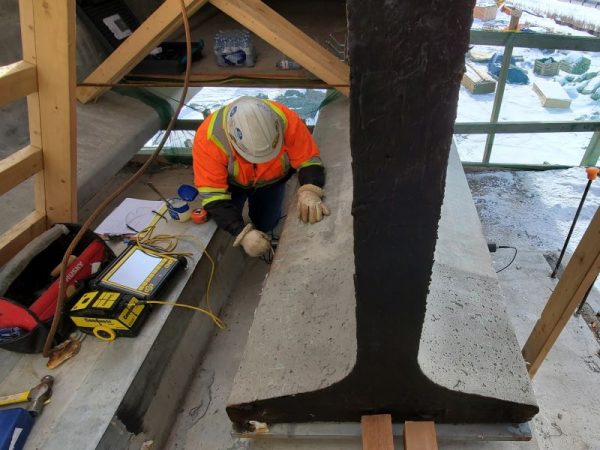
2. Ultrasonic Pulse Echo (UPE)
Ultrasonic Pulse Echo (UPE) is another powerful NDT technique employed in forensic investigations of reinforced concrete structures. This method involves sending ultrasonic pulses into the concrete and analyzing the echoes reflected from internal interfaces, such as cracks, interfaces between concrete and reinforcement, and voids.
By interpreting the characteristics of these echoes, engineers can identify the location, size, and orientation of defects within the structure. In cases of fire damage, UPE can help determine the extent of internal damage and assess the structural integrity of the concrete elements. Furthermore, in evaluating structural failure, UPE results can help forensic identify the root cause, and the extent and severity of existing anomalies.
3. Schmidt Hammer
Schmidt Hammer of Rebound Hammer Testing is a portable and widely used method for estimating the compressive strength of concrete based on the rebound velocity of a spring-loaded hammer striking the surface. This technique relies on the principle that the rebound distance of the hammer is inversely proportional to the hardness or strength of the concrete. Rebound hammer tests are nondestructive and can be performed rapidly, making them suitable for assessing concrete strength across large areas or structures. When companion cylinders or core samples exist, the rebound numbers can be correlated with the actual strength (from compression test). The procedure would significantly reduce the number of cores needed for a comprehensive assessment.
4. Corrosion Mapping + Corrosion Rate
Corrosion of steel reinforcement is a common problem in reinforced concrete structures, often leading to structural deterioration and failure. NDT methods are indispensable for detecting and evaluating corrosion in these structures. Techniques such as half-cell potential measurement, electromagnetic methods, and ground-penetrating radar (GPR) can be employed to assess the corrosion activity and distribution of reinforcement within concrete members. These methods can help forensic experts with evaluating the corrosion condition in structure failure cases (collapse of parking garages) and by identifying areas of high corrosion risk, engineers can prioritize maintenance and repair efforts to prevent further degradation of the structure. Furthermore, advanced methods such as corrosion rate measurement can be used to determine the speed of ongoing corrosion.
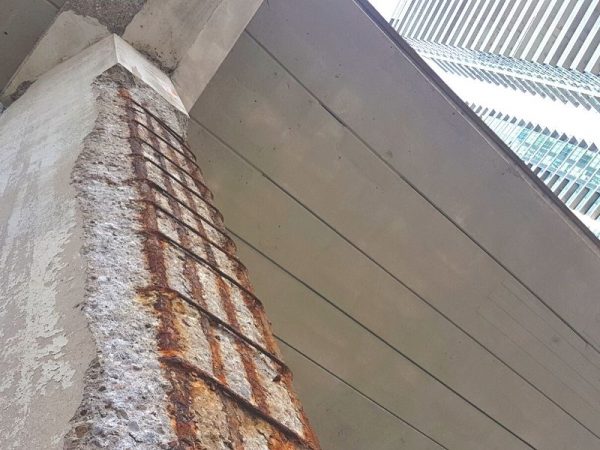
5. Ground Penetrating Radar (GPR)
Ground Penetrating Radar (GPR) is a nondestructive geophysical method that utilizes electromagnetic waves to investigate subsurface materials and structures. In forensic investigations of concrete structures, GPR plays a crucial role in detecting and characterizing internal features, anomalies, and defects without the need for invasive procedures.
In reinforced concrete structures, GPR is particularly valuable for mapping the distribution and condition of embedded reinforcement bars, post-tensioning tendons, and other subsurface objects. By interpreting the radar signals reflected from metallic or dielectric interfaces, engineers can visualize the arrangement of reinforcement within concrete elements, assess spacing and cover depths, and identify areas prone to corrosion or structural weakening.
GPR can also be employed to measure the thickness of concrete elements such as slabs, walls, and bridge decks, providing valuable insights into their structural condition and deterioration over time.
Case Studies
To illustrate the practical application of nondestructive testing for forensic investigation of concrete structures, let’s consider two case studies:
1. Concrete Foundation Exposed to Fire / Elevated Heat
A concrete foundation wall in a still manufacturing plant was exposed to elevated temperatures as a result of being exposed to molten steel. Forensic experts were tasked with assessing the structural integrity of the reinforced concrete foundation wall. Ultrasonic Pulse Velocity were utilized to evaluate the extent of damage caused by the elevated temperatures both on site, and on the core samples extracted from the wall. The results revealed no significant reduction in pulse velocity of concrete across the depth. Based on these findings, recommendations were made for structural repair and reinforcement to ensure the safety of the asset.
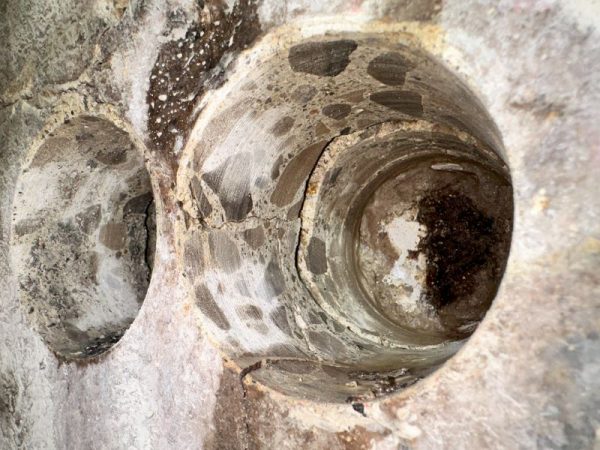
2. Corrosion-Related Failure Investigation
In the aftermath of Algo Centre Mall in Elliot-Lake, Ontario, NDT techniques were employed to investigate the cause, and severity of structural failure. Corrosion inspection methods, including half-cell potential mapping and corrosion rate measurement were used to assess the condition of the reinforcement and detect areas of active corrosion.
Conclusions
Nondestructive testing methods play a vital role in forensic investigations of reinforced concrete structures, particularly in cases involving exposure to extreme heat, fire, and corrosion. Techniques such as Ultrasonic Pulse Velocity, Ultrasonic Pulse Echo, and Corrosion Inspection provide valuable insights into the condition of concrete and reinforcement, enabling engineers to identify defects, assess damage, and develop effective repair strategies. The use of Schmidt Hammer and other advanced combined methods can be used to assess the strength of concrete.
By leveraging the capabilities of NDT, forensic experts can get a better understanding of the root cause of structural failures. Furthermore, they can ensure the safety, durability, and longevity of partially damaged concrete structures, ultimately preserving public safety and infrastructure resilience.


